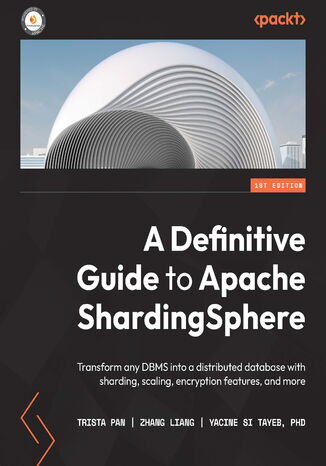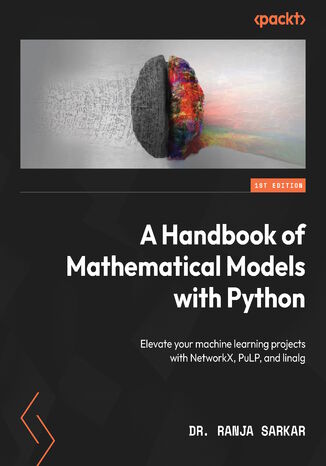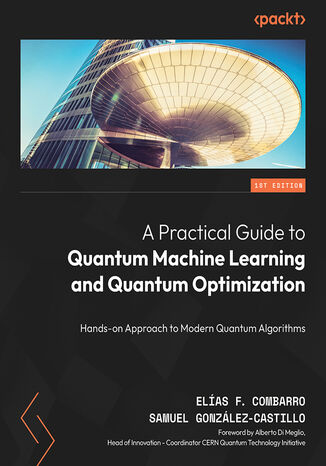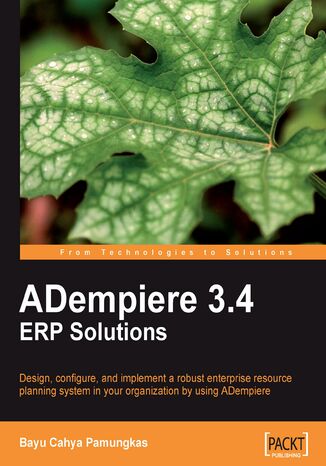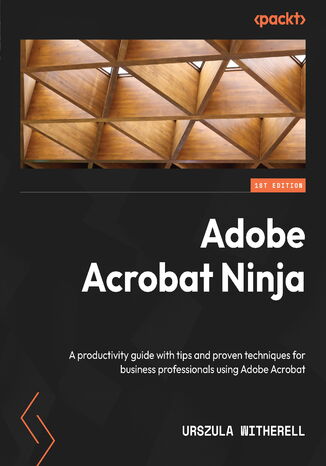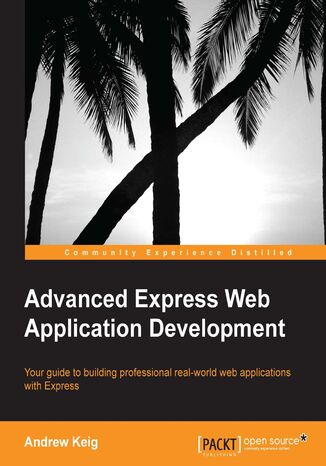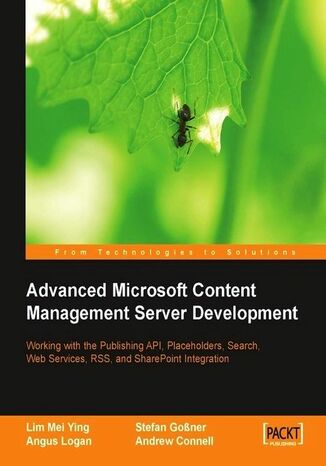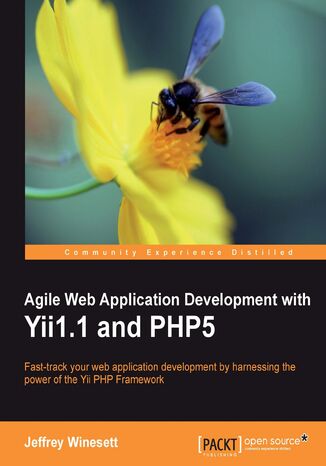Kategorie
-
- Bitcoin
- Bizneswoman
- Coaching
- Controlling
- E-biznes
- Ekonomia
- Finanse
- Giełda i inwestycje
- Kompetencje osobiste
- Komputer w biurze
- Komunikacja i negocjacje
- Mała firma
- Marketing
- Motywacja
- Multimedialne szkolenia
- Nieruchomości
- Perswazja i NLP
- Podatki
- Polityka społeczna
- Poradniki
- Prezentacje
- Przywództwo
- Public Relation
- Raporty, analizy
- Sekret
- Social Media
- Sprzedaż
- Start-up
- Twoja kariera
- Zarządzanie
- Zarządzanie projektami
- Zasoby ludzkie (HR)
-
- Architektura i wnętrza
- BHP
- Biznes i Ekonomia
- Dom i ogród
- E-Biznes
- Ekonomia i finanse
- Ezoteryka
- Finanse
- Finanse osobiste
- Firma
- Fotografia
- Informatyka
- Kadry i płace
- Kobieca
- Komputery, Excel
- Księgowość
- Kultura i literatura
- Naukowe i akademickie
- Ochrona środowiska
- Opiniotwórcze
- Oświata
- Podatki
- Podróże
- Psychologia
- Religia
- Rolnictwo
- Rynek książki i prasy
- Transport i Spedycja
- Zdrowie i uroda
-
- Aplikacje biurowe
- Bazy danych
- Bioinformatyka
- Biznes IT
- CAD/CAM
- Digital Lifestyle
- DTP
- Elektronika
- Fotografia cyfrowa
- Grafika komputerowa
- Gry
- Hacking
- Hardware
- IT w ekonomii
- Pakiety naukowe
- Podręczniki szkolne
- Podstawy komputera
- Programowanie
- Programowanie mobilne
- Serwery internetowe
- Sieci komputerowe
- Start-up
- Systemy operacyjne
- Sztuczna inteligencja
- Technologia dla dzieci
- Webmasterstwo
-
- Antologie
- Ballada
- Biografie i autobiografie
- Dla dorosłych
- Dramat
- Dzienniki, pamiętniki, listy
- Epos, epopeja
- Esej
- Fantastyka i science-fiction
- Felietony
- Fikcja
- Humor, satyra
- Inne
- Klasyczna
- Kryminał
- Literatura faktu
- Literatura piękna
- Mity i legendy
- Nobliści
- Nowele
- Obyczajowa
- Okultyzm i magia
- Opowiadania
- Pamiętniki
- Podróże
- Poemat
- Poezja
- Polityka
- Popularnonaukowa
- Powieść
- Powieść historyczna
- Proza
- Przygodowa
- Publicystyka
- Reportaż
- Romans i literatura obyczajowa
- Sensacja
- Thriller, Horror
- Wywiady i wspomnienia
-
- Archeologia
- Bibliotekoznawstwo
- Filmoznawstwo
- Filologia
- Filologia polska
- Filozofia
- Finanse i bankowość
- Geografia
- Gospodarka
- Handel. Gospodarka światowa
- Historia i archeologia
- Historia sztuki i architektury
- Kulturoznawstwo
- Lingwistyka
- Literaturoznawstwo
- Logistyka
- Matematyka
- Medycyna
- Nauki humanistyczne
- Pedagogika
- Pomoce naukowe
- Popularnonaukowa
- Pozostałe
- Psychologia
- Socjologia
- Teatrologia
- Teologia
- Teorie i nauki ekonomiczne
- Transport i spedycja
- Wychowanie fizyczne
- Zarządzanie i marketing
-
- BHP
- Historia
- Kodeks drogowy. Prawo jazdy
- Nauki prawne
- Ochrona zdrowia
- Ogólne, kompendium wiedzy
- Podręczniki akademickie
- Pozostałe
- Prawo budowlane i lokalowe
- Prawo cywilne
- Prawo finansowe
- Prawo gospodarcze
- Prawo gospodarcze i handlowe
- Prawo karne
- Prawo karne. Przestępstwa karne. Kryminologia
- Prawo międzynarodowe
- Prawo międzynarodowe i zagraniczne
- Prawo ochrony zdrowia
- Prawo oświatowe
- Prawo podatkowe
- Prawo pracy i ubezpieczeń społecznych
- Prawo publiczne, konstytucyjne i administracyjne
- Prawo rodzinne i opiekuńcze
- Prawo rolne
- Prawo socjalne, prawo pracy
- Prawo Unii Europejskiej
- Przemysł
- Rolne i ochrona środowiska
- Słowniki i encyklopedie
- Zamówienia publiczne
- Zarządzanie
-
- Afryka
- Albumy
- Ameryka Południowa
- Ameryka Środkowa i Północna
- Australia, Nowa Zelandia, Oceania
- Austria
- Azja
- Bałkany
- Bliski Wschód
- Bułgaria
- Chiny
- Chorwacja
- Czechy
- Dania
- Egipt
- Estonia
- Europa
- Francja
- Góry
- Grecja
- Hiszpania
- Holandia
- Islandia
- Litwa
- Łotwa
- Mapy, Plany miast, Atlasy
- Miniprzewodniki
- Niemcy
- Norwegia
- Podróże aktywne
- Polska
- Portugalia
- Pozostałe
- Przewodniki po hotelach i restauracjach
- Rosja
- Rumunia
- Słowacja
- Słowenia
- Szwajcaria
- Szwecja
- Świat
- Turcja
- Ukraina
- Węgry
- Wielka Brytania
- Włochy
-
- Filozofie życiowe
- Kompetencje psychospołeczne
- Komunikacja międzyludzka
- Mindfulness
- Ogólne
- Perswazja i NLP
- Psychologia akademicka
- Psychologia duszy i umysłu
- Psychologia pracy
- Relacje i związki
- Rodzicielstwo i psychologia dziecka
- Rozwiązywanie problemów
- Rozwój intelektualny
- Sekret
- Seksualność
- Uwodzenie
- Wygląd i wizerunek
- Życiowe filozofie
-
- Bitcoin
- Bizneswoman
- Coaching
- Controlling
- E-biznes
- Ekonomia
- Finanse
- Giełda i inwestycje
- Kompetencje osobiste
- Komunikacja i negocjacje
- Mała firma
- Marketing
- Motywacja
- Nieruchomości
- Perswazja i NLP
- Podatki
- Polityka społeczna
- Poradniki
- Prezentacje
- Przywództwo
- Public Relation
- Sekret
- Social Media
- Sprzedaż
- Start-up
- Twoja kariera
- Zarządzanie
- Zarządzanie projektami
- Zasoby ludzkie (HR)
-
- Antologie
- Ballada
- Biografie i autobiografie
- Dla dorosłych
- Dramat
- Dzienniki, pamiętniki, listy
- Epos, epopeja
- Esej
- Fantastyka i science-fiction
- Felietony
- Fikcja
- Humor, satyra
- Inne
- Klasyczna
- Kryminał
- Literatura faktu
- Literatura piękna
- Mity i legendy
- Nobliści
- Nowele
- Obyczajowa
- Okultyzm i magia
- Opowiadania
- Pamiętniki
- Podróże
- Poezja
- Polityka
- Popularnonaukowa
- Powieść
- Powieść historyczna
- Proza
- Przygodowa
- Publicystyka
- Reportaż
- Romans i literatura obyczajowa
- Sensacja
- Thriller, Horror
- Wywiady i wspomnienia
-
- Filozofie życiowe
- Komunikacja międzyludzka
- Mindfulness
- Ogólne
- Perswazja i NLP
- Psychologia akademicka
- Psychologia duszy i umysłu
- Psychologia pracy
- Relacje i związki
- Rodzicielstwo i psychologia dziecka
- Rozwiązywanie problemów
- Rozwój intelektualny
- Sekret
- Seksualność
- Uwodzenie
- Wygląd i wizerunek
- Życiowe filozofie
Inne
Trista Pan, Zhang Liang, Yacine Si Tayeb
Apache ShardingSphere is a new open source ecosystem for distributed data infrastructures based on pluggability and cloud-native principles that helps enhance your database.This book begins with a quick overview of the main challenges faced by database management systems (DBMSs) in production environments, followed by a brief introduction to the software's kernel concept. After that, using real-world examples of distributed database solutions, elastic scaling, DistSQL, synthetic monitoring, database gateways, and SQL authority and user authentication, you’ll fully understand ShardingSphere's architectural components, how they’re configured and can be plugged into your existing infrastructure, and how to manage your data and applications. You’ll also explore ShardingSphere-JDBC and ShardingSphere-Proxy, the ecosystem’s clients, and how they can work either concurrently or independently to address your needs. You’ll then learn how to customize the plugin platform to define personalized user strategies and manage multiple configurations seamlessly. Finally, the book enables you to get up and running with functional and performance tests for all scenarios.By the end of this book, you’ll be able to build and deploy a customized version of ShardingSphere, addressing the key pain points encountered in your data management infrastructure.
Mathematical modeling is the art of transforming a business problem into a well-defined mathematical formulation. Its emphasis on interpretability is particularly crucial when deploying a model to support high-stake decisions in sensitive sectors like pharmaceuticals and healthcare.Through this book, you’ll gain a firm grasp of the foundational mathematics underpinning various machine learning algorithms. Equipped with this knowledge, you can modify algorithms to suit your business problem. Starting with the basic theory and concepts of mathematical modeling, you’ll explore an array of mathematical tools that will empower you to extract insights and understand the data better, which in turn will aid in making optimal, data-driven decisions. The book allows you to explore mathematical optimization and its wide range of applications, and concludes by highlighting the synergetic value derived from blending mathematical models with machine learning.Ultimately, you’ll be able to apply everything you’ve learned to choose the most fitting methodologies for the business problems you encounter.
Alberto Di Meglio, Elías F. Combarro, Samuel González-Castillo, Alberto Di Meglio
This book provides deep coverage of modern quantum algorithms that can be used to solve real-world problems. You’ll be introduced to quantum computing using a hands-on approach with minimal prerequisites.You’ll discover many algorithms, tools, and methods to model optimization problems with the QUBO and Ising formalisms, and you will find out how to solve optimization problems with quantum annealing, QAOA, Grover Adaptive Search (GAS), and VQE. This book also shows you how to train quantum machine learning models, such as quantum support vector machines, quantum neural networks, and quantum generative adversarial networks. The book takes a straightforward path to help you learn about quantum algorithms, illustrating them with code that’s ready to be run on quantum simulators and actual quantum computers. You’ll also learn how to utilize programming frameworks such as IBM’s Qiskit, Xanadu’s PennyLane, and D-Wave’s Leap.Through reading this book, you will not only build a solid foundation of the fundamentals of quantum computing, but you will also become familiar with a wide variety of modern quantum algorithms. Moreover, this book will give you the programming skills that will enable you to start applying quantum methods to solve practical problems right away.
Bayu Cahya Pamungkas, Redhaun Redhaun
Enterprise resource planning (ERP) systems are essential in today's business market. There are many options for ERP systems; however, ADempiere offers a solid foundation for developing a powerful ERP system that helps your business to manage data efficiently, streamline different processes, lower costs, and improve the efficiency levels without too much complexity. This practical book offers a comprehensive understanding of ADempiere and a look at its main features by way of developing and enhancing a sample case study from concept to deployment. This book will help you model complex business processes with ease.You will learn to install ADempiere followed by configuring the company structure and the initial client set up. You can start working with ADempiere immediately because this book will get you up and running quickly and assumes no knowledge or experience of working with ADempiere. ADempiere3.4 ERP Solutions enables you to set up the accounting parts, define the prerequisite data, learn about product and price management, and perform procurement and sales activities. When you read the book, you'll understand the concept behind the ADempiere workflow and the important function of managing the inventory. Activities such as making user-defined financial reports, procedures on importing data, and security will be covered in detail, and you will also learn about the application dictionary.ADempiere generates accounting facts/journals automatically. In this book, you will understand the impact of these accounting facts in detail. This book will give you a comprehensive study on how to easily implement ADempiere and make the best use of this open source ERP system.
Adobe Acrobat can help you solve a wide variety of problems that crop up when you work with PDF documents on a daily basis. The most common file type for business and communication, this compact portable document format is widely used to collect as well as present information, as well as being equipped with many lesser-known features that can keep your content secure while making it easy to share. From archive features that will keep your documents available for years to come to features related to accessibility, organizing, annotating, editing, and whatever else you use PDFs for, Acrobat has the answer if you know where to look.Designed for professionals who likely already use Adobe Acrobat Pro, this guide introduces many ideas, features, and online services, sorted and organized for you to easily find the topics relevant to your work and requirements.You can jump to any chapter without sifting through prior pages to explore the tools and functions explained through step-by-step instructions and examples. The information in some chapters may build on existing knowledge, but you are not expected to have an advanced level of prior experience.By the end of this book, you’ll have gained a solid understanding of the many capabilities of PDFs and how Acrobat makes it possible to work in a way that you will never miss good old ink and paper.
Building an Express application that is reliable, robust, maintainable, testable, and can scale beyond a single server requires a bit of extra thought and effort. Express applications that need to survive in a production environment will need to reach out to the Node ecosystem and beyond, for support.You will start by laying the foundations of your software development journey, as you drive-out features under test. You will move on quickly to expand on your existing knowledge, learning how to create a web API and a consuming client. You will then introduce a real-time element in your application.Following on from this, you will begin a process of incrementally improving your application as you tackle security, introduce SSL support, and how to handle security vulnerabilities. Next, the book will take you through the process of scaling and then decoupling your application. Finally, you will take a look at various ways you can improve your application's performance and reliability.
Stefan Gossner, Lim Mei Ying, Angus Logan, Andrew Connell
Microsoft Content Management Server 2002 is a dynamic web publishing system with which you can build websites quickly and cost-efficiently. MCMS provides the administration, authoring, and data management functionality, and you provide the website interface, logic, and workflow. Microsoft SharePoint Portal Server (SPS) also features in the book. SPS 2003 enables enterprises to deploy an intelligent portal that seamlessly connects users, teams, and knowledge so that people can take advantage of relevant information across business processes to help them work more efficiently.You've mastered the basics of MCMS, and setup your own MCMS installation. You've only scratched the surface. This book is your gateway to squeezing every penny from your investment in MCMS and SPS, and making these two applications work together to provide an outstanding richness of content delivery and easy maintainability. As a developer, the Publishing API (PAPI) is at the heart of your work with MCMS, and this book starts by taking you on the most detailed tour of the PAPI you will find anywhere. As a live example, a component that reveals the structure of your MCMS site is created, taking you through how to manage the common elements of MCMS programmatically. Getting SharePoint and MCMS to work together is the next stop in the book. You will see how to use SharePoint's search engine to search MCMS content, publish content between the two systems, and create SharePoint Web Parts to draw content from MCMS.To ease your everyday work with MCMS, there are chapters on placeholder validation, and some useful custom placeholders for common MCMS tasks, such as a date-time picker, a placeholder for multiple attachments, and a DataGrid placeholder among others. There are a number of ways to consume MCMS content from the outside world, and we look at two exciting ways here; RSS and InfoPath/Web Services. The InfoPath solution provides another interface to MCMS content that allows content authors to concentrate on content and not the presentation. The book is rounded off with a number of must-have MCMS tips and tricks.Revert a posting to a previous version Change a postingÔø???s template Build a recycle bin Deal with links to deleted resources Update a postingÔø???s properties directly from a template file Re-write ugly URLs to friendly URLs Export resource gallery items using the site deployment API (SDAPI) Configure the position and size of the Web Author Console Dialogs Get frames and IFrames to work correctly in a template file
Jeffrey Winesett, Qiang Xue (Project)
This book is a step by step tutorial in developing a real-world application using the incremental and iterative approach to software development. You learn about agile software development by leaning on the agile nature of the Yii application development framework. You touch on each aspect of the software development lifecycle by building a project task management application from concept through production deployment.After a brief, general introduction to the Yii framework and outlining the software development approach taken throughout the book, the chapters break down in the same way as software development iterations do in real-world projects. After the 1st iteration, you will have a working and tested application with a valid, tested connection to a database.In the 2nd and 3rd iterations, we flesh out our main database entities and domain object model and become familiar with Yii's object-relational-mapping (ORM) layer, Active Record. We also learn how to lean on Yii's auto-generation tools to automatically build our create/read/update/delete (CRUD) functionality against our newly created model. These iterations also focus on how Yii's form validation and submission model works. By the end of the third iteration you will have a working application that allows you to mange projects and issues (tasks) within those projects.The 4th and 5th iterations are dedicated to user management. We learn about the built-in authentication model within Yii to assist in application login and logout functionality. We then dive into the authorization model, first taking advantage of a Yii's simple access control model, then implementing the more sophisticated role-based access control (RBAC) framework that Yii provides.By the end of the 5th iteration, all of the basics of a task management application are in place. The next several iterations are focused on the nice-to-haves. We add user comment functionality, introducing a reusable content portlet architecture approach in the process. We add in an RSS Web feed and demonstrate how easy it is to integrate other third-party tools within a Yii application. We take advantage of Yii's theming structure to help streamline and design the application, and then introduce Yii's internationalization (I18N) features so the application can be adapted to various languages and regions without engineering changes.Finally, we turn our focus to production deployment. We introduce ways to optimize performance and security to prepare the application for a real-world production environment.

